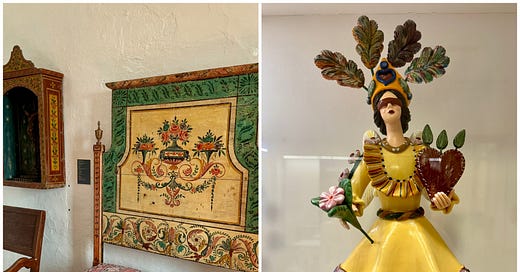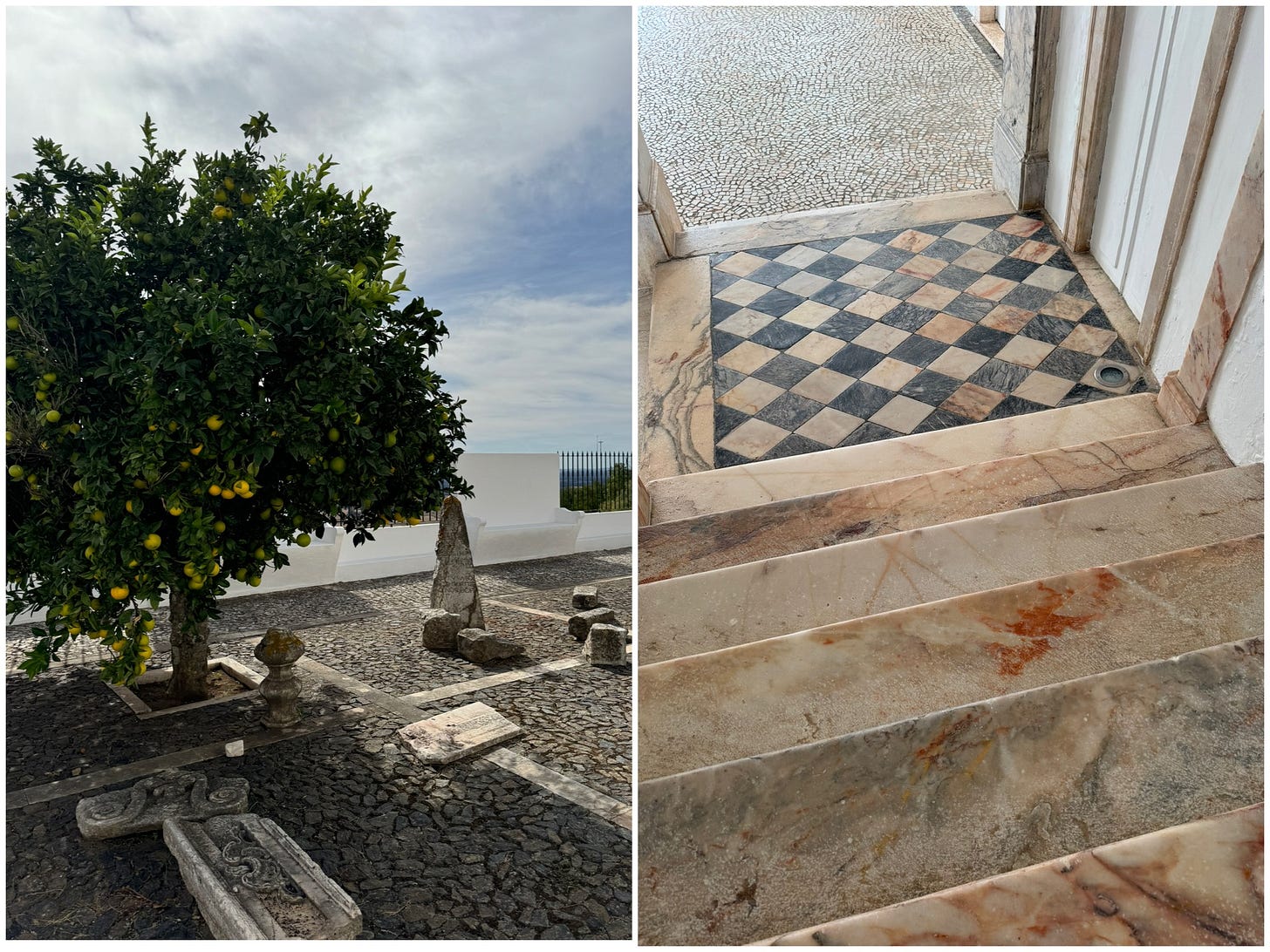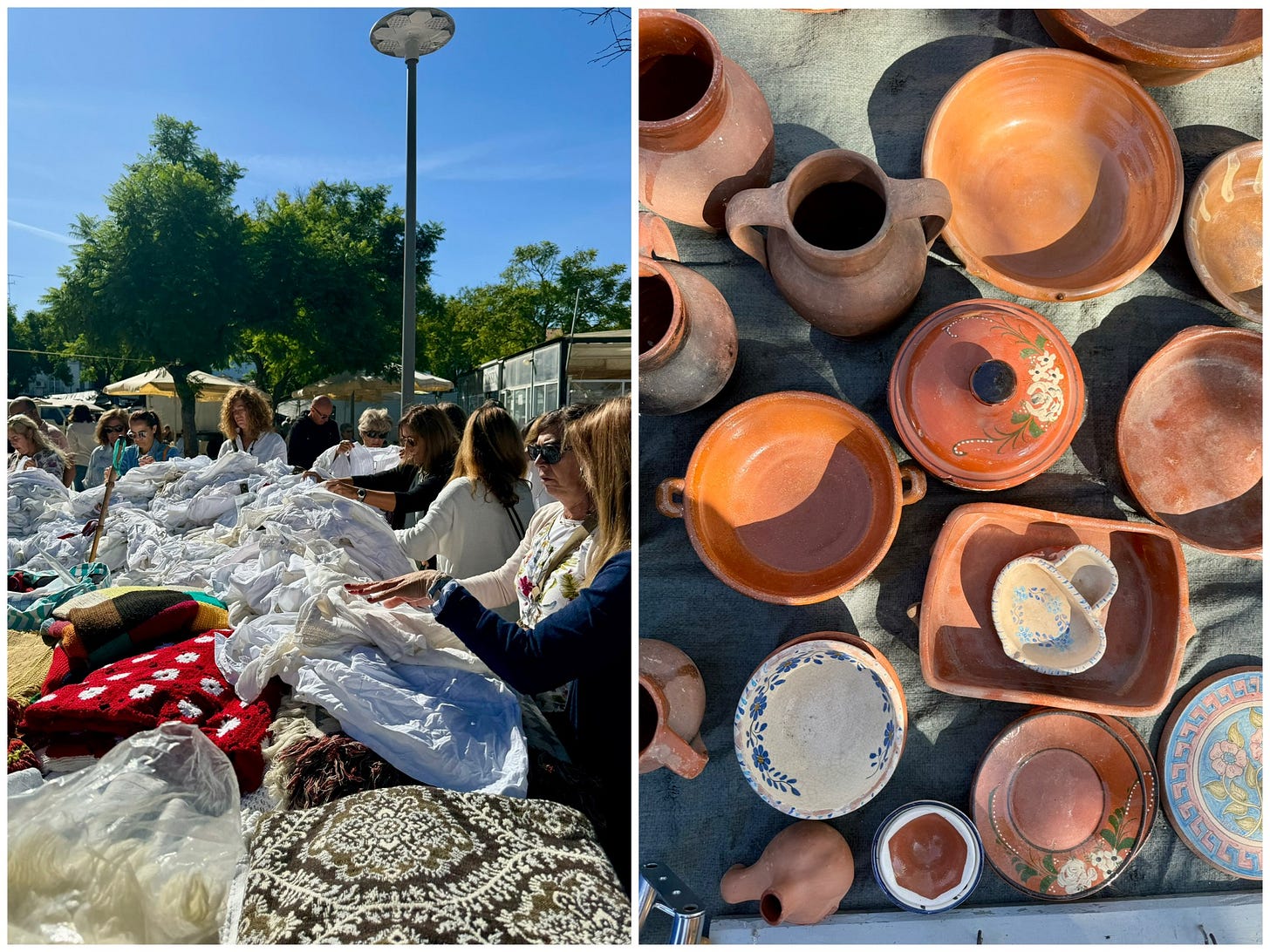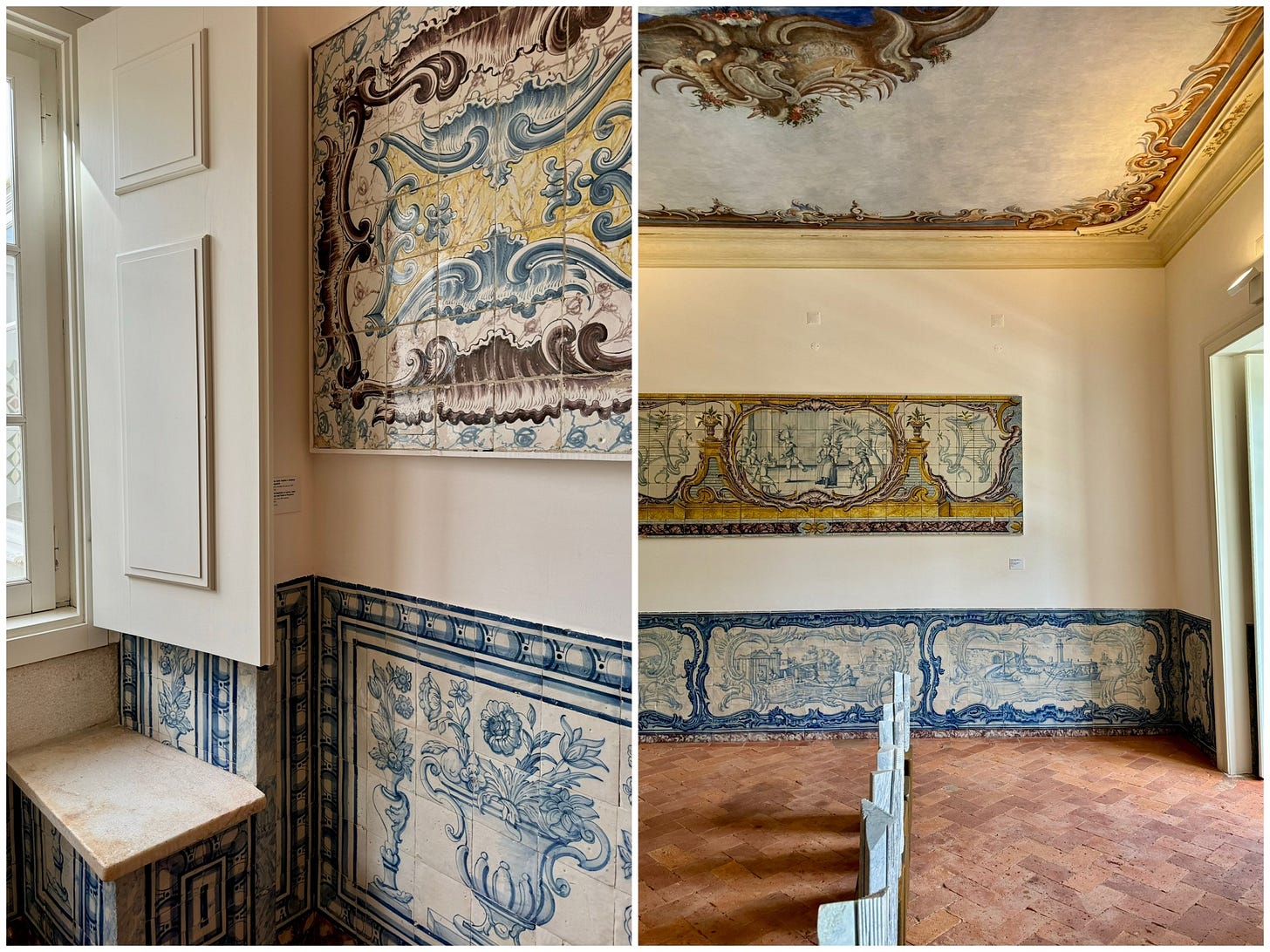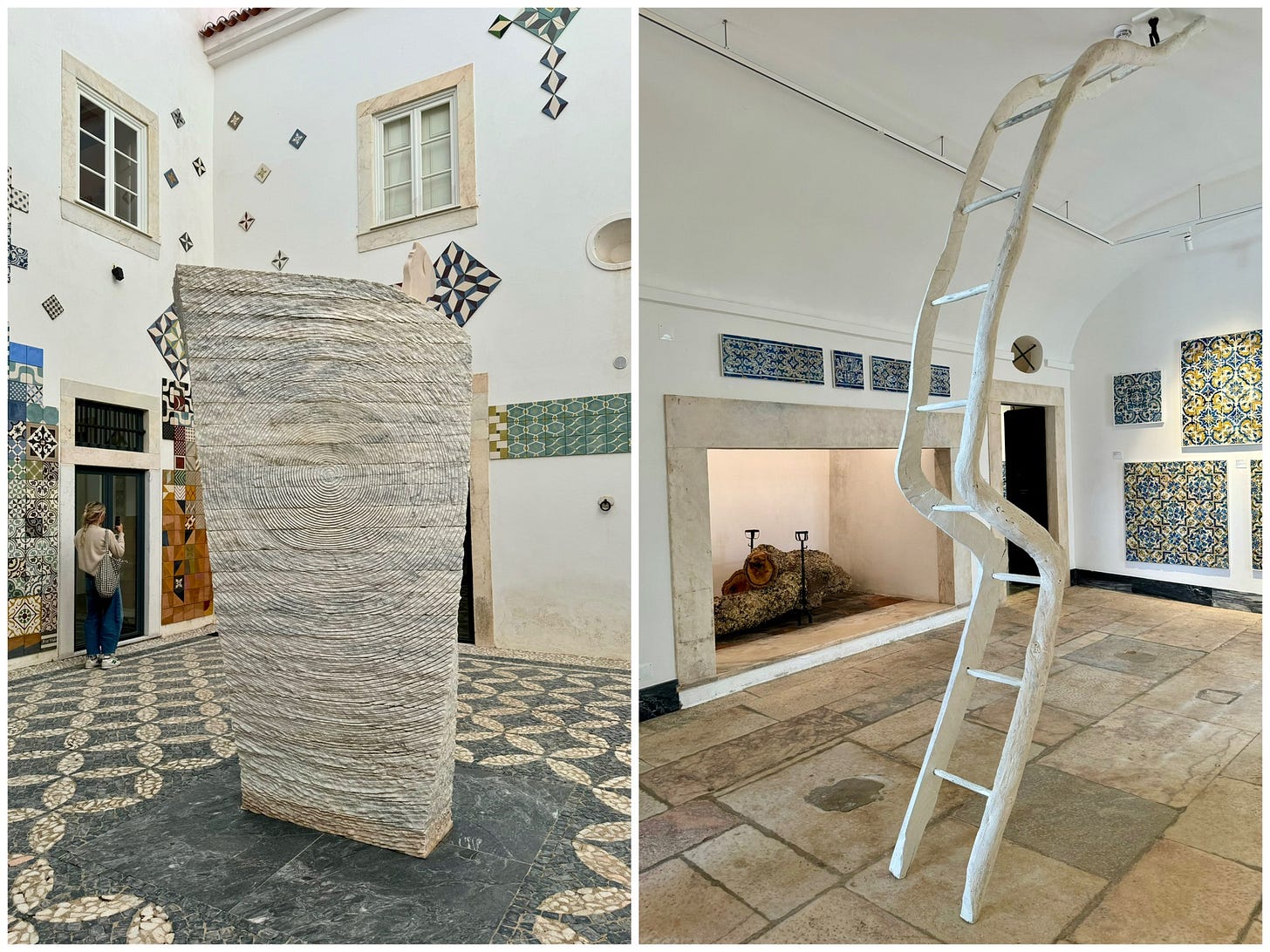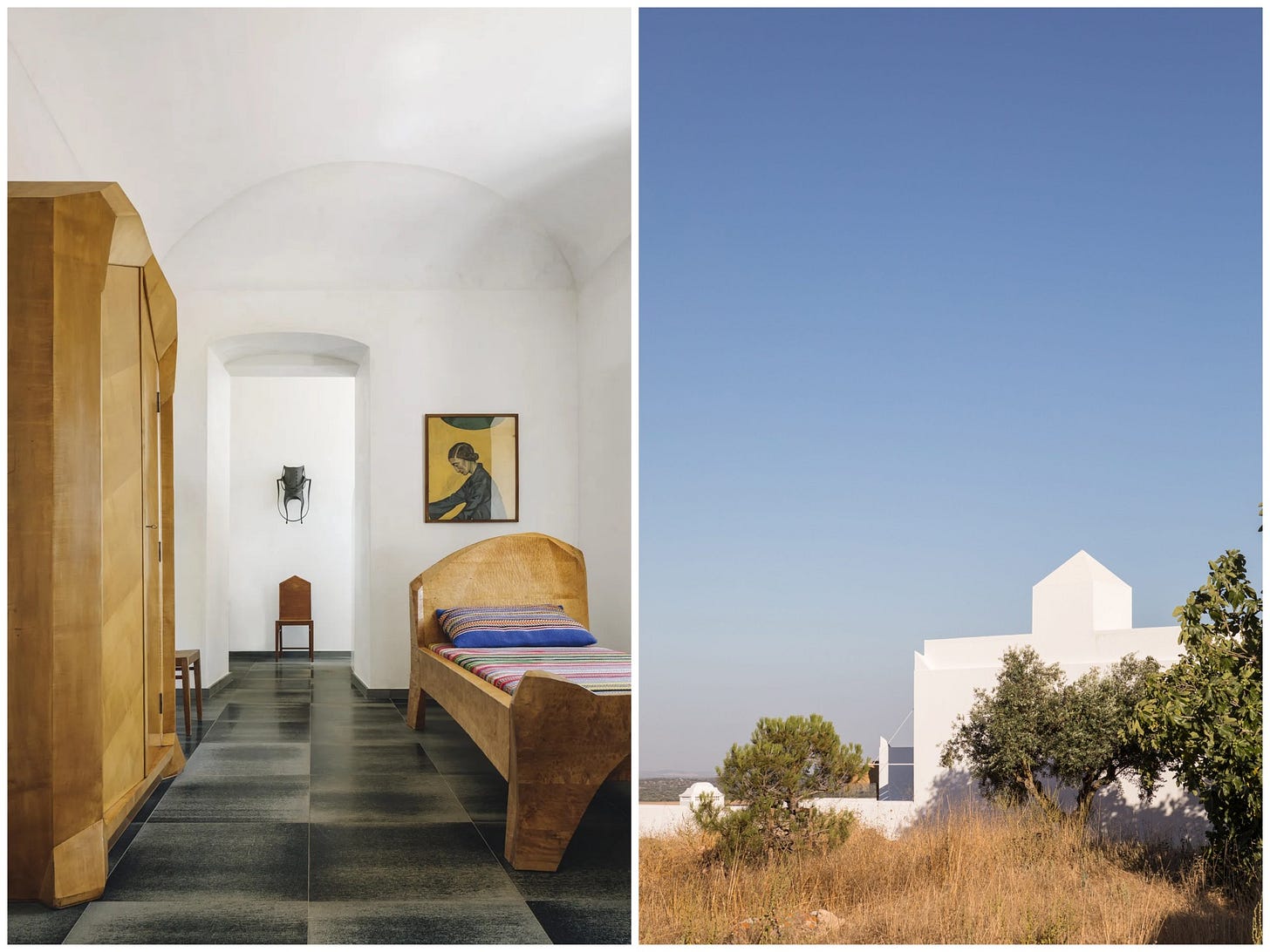Small but Mighty: Estremoz
The best antique market in Portugal; traditional clay figures; a house museum full of folk art; an anthroposophic hotel; and a Lisbon sidebar
ESTREMOZ IN HAND
This will be my last newsletter about Portugal for awhile, but before I move along, a closing nudge in the direction of Estremoz—a charming little village in the Alentejo that is having something of a moment. With luminous whitewashed buildings, medieval flourishes, and sidewalks made of marble, Estremoz is also home to the best antique market in Portugal (!!!) and a joyful new interpretive center dedicated to the Bonecos of Estremoz (special folk art/traditional clay figures dating back to the 17th century and only made here), plus a delightfully approachable Michelin-recognized restaurant that feels more all-day cafe than fussy white tablecloth.
Despite labyrinthine alleys that all look strikingly similar, Estremoz’s city center is quite small, easily navigable by foot, and where you’ll spend most of your time. Facades may look humble compared to Lisbon or Porto, even the frillier ones, but stick your head inside an open doorway every chance you get for a hidden colorful frescoed ceiling or pink marble-clad entryway.
Antique Market // The town square comes alive every Saturday from 8am to 12:30pm. The most amazing collection of vintage pottery I’ve seen in one place (and equally amazing prices), plus beautiful old linens, furniture, cowbells, live chickens and birds, tables and tables of olives, cheese, and produce. Locals arrive early, then follow up with a long lunch, so make sure to snag a reservation.
Mercearia Gadanha is the go-to reservation in town—the Michelin-recommended grocery/wine shop/restaurant with zero pretense and the sweetest service. A departure from heavy traditional food of the Alentejo, chef Michele Marques is a wizard with vegetables, even in the meatiest scenarios, and her food is considered some of the best in the Alentejo. If you want to stay in town, there’s no equal to the Art Deco-detailed 12-room guesthouse upstairs.
Museo Berardo // I thought nothing could top the National Tile Museum in Lisbon, but the Berardo, which opened three years ago in the historic Tocha Palace, is expertly curated and presents the largest private tile collection in the country. It’s spectacular, and thanks to a few clever contemporary installations, it feels surprisingly fresh and relevant for a collection that dates back more than 800 years. You’ll want the private tour, trust me (for English, make sure to email in advance).
Museu Municipal Prof. Joaquim Vermelho // Worth the uphill walk at the edge of town, this reconstructed house museum is bursting at the cornices with folk art and handmade craft. Pottery, cork, vernacular painted furniture, and impressive collections of terracotta jugs, bread stamps, clay figures, and Roman/medieval archeological finds.
Interpretive Center // Like the rugs of Arraiolos and the pottery of Redondo, Estremoz has its own traditional craft that is hyper-specific to place. What started in the 17th century for devotional purposes grew into clay bonecos, or dolls, that represent the rural life and traditons of the region, and are now deeply embedded in the town’s cultural identity. At the beautiful new interpretive center, just a couple years old, the painted clay dolls are organized in a timeline by artist, and although the accompanying information is not always available in English, you’ll still get a solid grasp of the history and pure joy of this traditional craft.
Irma Flores // Just around the corner from the Interpretive Center, the Flores sisters, Maria Inácia and Perpétua are Estremoz’s craft icons. Visit their studio, where their nephew, Ricardo, has also taken up these clay figures. Occasionally, one of them might be OOO doing a demonstration at the municipal center, but, unless you arrive during afternoon lunch/siesta, there’s someone on hand to open the door, let you poke around and make a purchase. She’s proud of her work, and it’s really touching to see her beautiful hands in action.
Dá Licença // I am a hopeless sucker for anthroposophic design (my kids go to a Waldorf school), and this countryside hotel is full of it—wooden beds, armoires, and art from the Jugendstil movement (plucked from his former life as a gallerist in Paris). Equally compelling is the surrounding land, which was once farmed by the local nuns, dotted with olive and fig trees.
Keep reading with a 7-day free trial
Subscribe to In Hand to keep reading this post and get 7 days of free access to the full post archives.


